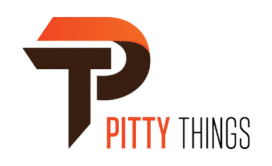
Managing an architecture and engineering firm can be lucrative if it’s done right, but it can also be a logistical nightmare to make things happen on time and on budget as they should, especially when budgets are prone to change, project scopes always seem to evolve and teams are constantly on the go between offices, client, sites, and field work. It is due to these issues that many firms will use tools like spreadsheets, email threads and software systems to keep their companies afloat, but you know what? Older software systems, spreadsheets and email chains, are outdated, hard to integrate, and create blind spots in budget, resource allocations and your bottom line.
That’s where Unit4 comes in.
Designed to support you in the work you do, Unit4 is as project-driven as you are. Its comprehensive software solution brings together all of the elements that make your business run smoothly from financial management to analytics via resource planning. Not only that, but it is totally mobile-friendly, and allows you to do everything you need to do on one single platform, whether you’re in the office or out in the field.
Instead of forcing A&E firms to bend their workflows to fit rigid accounting tools, Unit4 adapts to the unique realities of project-based industries. For organizations in 2025, it offers a way to cut through administrative overload and focus more on delivering great work to clients.
Key Strengths of Unit4
1. Project-Based Financial Management
Unit4 excels in project-centric financials, which is where many A&E firms struggle the most. Instead of lumping all revenue and expenses into broad accounting categories, Unit4 ties them directly to specific projects. That means project managers can monitor costs against estimates in real time, whether it’s subcontractor fees, material purchases, or billable hours.
Perhaps the most valuable feature here is revenue recognition aligned with milestones. Instead of waiting until the project is finished or using generic accruals, Unit4 recognizes income when key deliverables are met. This creates a clearer picture of financial health and reduces disputes with clients over billing.
2. Smarter Resource Planning
A&E projects often hinge on the availability of specialized staff. One overbooked structural engineer can delay an entire schedule, while underutilized staff represent wasted potential. Unit4’s resource planning tools help firms assign the right people to the right work by mapping both skills and availability.
The system prevents staff burnout by avoiding overload, while also ensuring junior engineers and architects get appropriate opportunities. This balance not only improves efficiency but also contributes to employee satisfaction – a factor that can reduce turnover in a competitive industry.
3. Mobile Access for Field Staff
Unlike office-based industries, A&E firms have staff constantly on the move. Whether it’s site inspections, client meetings, or travel between offices, teams need a way to stay connected without waiting until they’re back at their desks.
Unit4’s mobile-friendly design makes it easy for employees to log time, submit expenses, and access project information on the go. This reduces delays, improves the accuracy of captured data, and directly speeds up billing cycles. For example, instead of waiting a week for expense receipts from a field visit, managers can review and approve them the same day.
4. Real-Time Dashboards and Reporting
Executives and project leaders often struggle with decision-making because by the time they receive financial or utilization reports, the data is already outdated. Unit4 solves this with real-time dashboards that show key performance indicators at a glance.
Profitability by project, resource utilization rates, and even early warnings about potential overruns can be tracked daily. This allows firms to act proactively, not reactively, catching scope creep early instead of writing off overruns at the end of a job.
5. Adaptability When Projects Change
In architecture and engineering, change is inevitable. A design gets revised, new regulations require adjustments, or external factors delay progress. Many systems make adapting to these changes painful, requiring custom coding or expensive consultants.
Unit4, by contrast, is built with flexibility in mind. Project budgets, workflows, and deliverables can be modified without tearing down the system. This makes it far more adaptable than rigid legacy ERPs and ensures firms can remain agile when conditions shift.
6. Improved Invoicing and Cash Flow
Cash flow is a lifeline for A&E businesses, and slow invoicing is one of the biggest pain points. Because Unit4 captures time and expenses in real time, often directly from mobile devices, invoices are both more accurate and faster to generate.
This reduces disputes with clients, minimizes the risk of “lost” billable hours, and ensures firms get paid sooner. In industries where margins can be tight, those improvements can have a major impact on overall profitability.
7. Scalability for Growth
Finally, Unit4 shines when it comes to scalability. Many A&E firms operate across multiple locations, sometimes in different countries, dealing with varying currencies and regulatory environments. Unit4 supports multi-entity and multi-currency operations out of the box. This means that whether a firm is expanding domestically or internationally, the system can grow with them without requiring a complete overhaul.
Pros of Unit4
- Clear project-centric financial tracking
- Revenue recognition tied to milestones, not just dates
- Strong resource utilization and talent-matching features
- Mobile-friendly tools for staff in the field
- Real-time dashboards for executives and managers
- Adaptable to scope changes and regulatory shifts
- Faster invoicing improves cash flow
- Scales effectively for growing or international firms
Cons of Unit4
- Implementation requires planning: Like any enterprise-level solution, rolling out Unit4 takes time, careful setup, and staff training.
- Learning curve: While more intuitive than legacy systems, some employees may initially resist or require support.
- Higher cost than entry-level tools: It’s more expensive than basic systems like QuickBooks, though it delivers far more capabilities in return.
Who Is It Best For?
Unit4 is particularly well-suited for:
- Mid-sized to large A&E firms running multiple concurrent projects.
- Organizations with mobile staff who need to log time and expenses instantly.
- Firms planning international expansion, given Unit4’s global scalability.
- Executives who want visibility into profitability, resource allocation, and progress in real time.
By contrast, very small firms or startups may find lighter, lower-cost systems more practical until they grow. But for businesses serious about efficiency, profitability, and sustainable scaling, Unit4 provides a robust foundation.
So, Is Unit4 Worth Your Time?
Unit4, there is no denying, is currently one of the strongest project-focused software solutions for people who are working in architecture or engineering firms right now. It has, as you can see, a lot of strengths, but perhaps the main strength it can offer you is the way it so closely mirrors the realities of the A&E industry, from shifting projects to mobile staff to the regulatory complexity you so often face.
In short: if you’re ready to stop fighting with disconnected systems and start gaining real control over your projects and profitability, Unit4 delivers.






